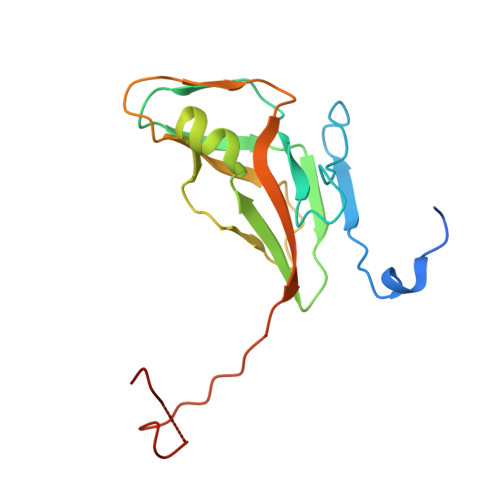Structural Characterization of Arginine Fingers: Identification of an Arginine Finger for the Pyrophosphatase dUTPases.
Nagy, G.N., Suardiaz, R., Lopata, A., Ozohanics, O., Vekey, K., Brooks, B.R., Leveles, I., Toth, J., Vertessy, B.G., Rosta, E.(2016) J Am Chem Soc 138: 15035-15045
- PubMed: 27740761
- DOI: https://doi.org/10.1021/jacs.6b09012
- Primary Citation of Related Structures:
5ECT, 5EDD - PubMed Abstract:
Arginine finger is a highly conserved and essential residue in many GTPase and AAA+ ATPase enzymes that completes the active site from a distinct protomer, forming contacts with the ¦Ă-phosphate of the nucleotide. To date, no pyrophosphatase has been identified that employs an arginine finger fulfilling all of the above properties; all essential arginine fingers are used to catalyze the cleavage of the ¦Ă-phosphate. Here, we identify and unveil the role of a conserved arginine residue in trimeric dUTPases that meets all the criteria established for arginine fingers. We found that the conserved arginine adjacent to the P-loop-like motif enables structural organization of the active site for efficient catalysis via its nucleotide coordination, while its direct electrostatic role in transition state stabilization is secondary. An exhaustive structure-based comparison of analogous, conserved arginines from nucleotide hydrolases and transferases revealed a consensus amino acid location and orientation for contacting the ¦Ă-phosphate of the substrate nucleotide. Despite the structurally equivalent position, functional differences between arginine fingers of dUTPases and NTPases are explained on the basis of the unique chemistry performed by the pyrophosphatase dUTPases.
Organizational Affiliation:
Department of Biotechnology and Food Sciences, Budapest University of Technology and Economics , Budapest 1111, Hungary.




















